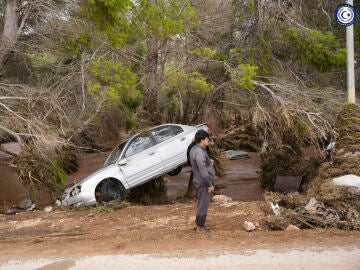
A shipment of 29 tons of humanitarian aid from the World Health Organization (WHO), with supplies for assist 250,000 peoplearrived this Saturday in the Libyan city of Benghaziabout 300 kilometers west of Derna, the city most affected by this week’s floods.
The shipment from the WHO logistics center in Dubai (United Arab Emirates) includes essential medicines, emergency surgical supplies, medical equipment and body bags, the Geneva-based organization said in a statement.
The WHO stressed that for now there have been recovered and identified the lifeless bodies of 3,958 victims. The floods caused by Cyclone Daniel, with effects aggravated by having caused two reservoirs to burst, have caused more than 7,000 deaths, 10,000 missing and at least 30,000 displaced.
In the statement, the WHO representative in Libya, Ahmed Zouiten, described the floods as “disaster of epic proportions“, and conveyed his condolences to the families of the victims.
A crisis that opens a political division
The political division and conflict in which Libya has been immersed for more than a decade takes its toll on the poor infrastructure in the city of Derna (east), the most affected by Cyclone Daniel. The list of survivors’ needs continues to grow: clean water and food, sanitation and hygiene services, psychosocial support and disease prevention, among others.
The humanitarian aid sent so far It’s a “drop in the ocean”, lamented Unicef, which appealed to donors to raise 67 million euros to cover the needs of 250,000 victims for one quarter.
The hundreds of millions of euros mobilized in the last week by the international community do not allow us to assist the victims of the Cyrenaica region, where nearly 664,000 people live – including 283,000 children – and who “desperately” need helpUnicef noted.
Outbreaks of diarrhea and cholera as well as dehydration and malnutrition are the main concerns for those close to 38,000 displaced in this part of the country, of which 30,000 of them are in Derna. For this reason, organizations warn of the risk of a second humanitarian crisis of diseases transmitted by the decomposition of bodies and contaminated water.
The political division – with two executives to the east and west – hinders the logistics of these efforts, including obtaining visas for humanitarian workers who travel to participate in the rescues. Added to this is the absence of a joint coordination strategy and the difficult access to the place after the destruction of roads and bridges that has also divided the city into two.
In a race against time, the teams on the field they continue to find survivorslike a woman and her four daughters who were at home, as well as an elderly woman under a collapsed building.
Source: Lasexta
Ricardo is a renowned author and journalist, known for his exceptional writing on top-news stories. He currently works as a writer at the 247 News Agency, where he is known for his ability to deliver breaking news and insightful analysis on the most pressing issues of the day.












